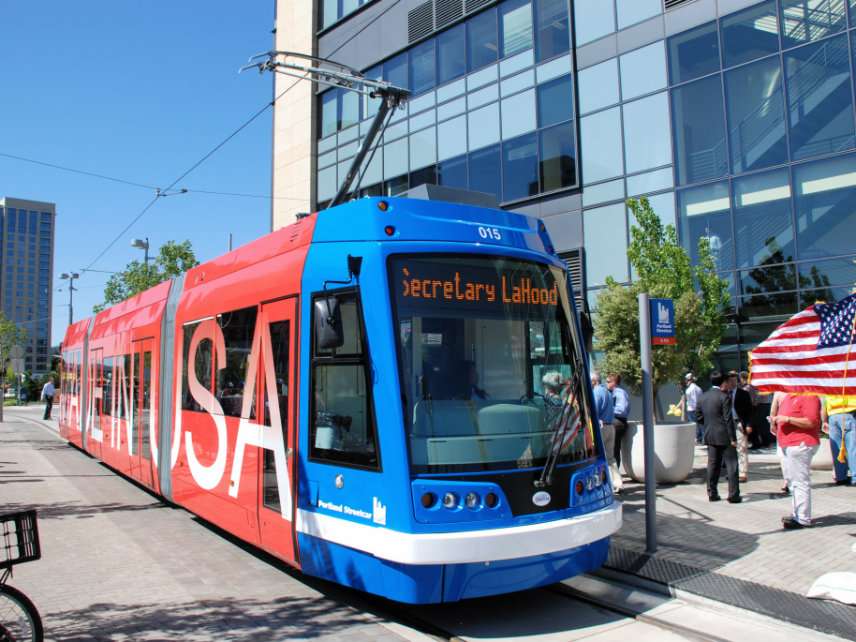How Bad Do Streetcar Predictions Have to Be to Get Politicians to Ask Questions?
Turns out, pretty bad.

When progressive politicians start raising eyebrows at projections for a public transit project, you know something must be very wrong.
Seattle Department of Transportation (SDOT) ridership and funding projections for its 1.2 mile Central City Connector streetcar are so wildly overblown even reliably pro-transit city councilmembers have worked themselves up to genuine scrutiny.
SDOT is projecting that by connecting Seattle's two currently operating streetcar lines, which have been averaging 5,200 passenger trips a week so far this year, streetcar traffic will jump 317 percent to 21,700 trips in its very first year of operations. And by 2035 ridership is projected at 29,500 a week. That works out to an increase of 467 percent.
"The financial assumptions are simply unrealistic based on our history with the streetcar," Seattle City Councilmember Lisa Herbold told the Seattle Times. "I don't want a situation where we don't meet those projections and the result is we end up seeing bus-service hours cut to pay for any shortfall."
Herbold is no foe of massive public transit expenditures. When Seattle metro-area Sound Transit—an agency with a history of cost overruns and ridership shortfalls—unveiled a $54 billion light rail expansion plan, Herbold voted in favor of a resolution demanding the project add more stops and be completed more quickly.
As far as I can tell, no other streetcar system in America has ever come close to seeing that kind of growth from the addition of a single line.
Take for instance Portland's 2012 Central Loop expansion, considered by other cities a model streetcar project, which connected a current streetcar line with 3.3 miles of new track in the eastern part of the city. Portland boasted the loop would add 8,100 trips in its first year, a 74 percent increase in ridership. Central Loop actually added 2,500 rides— a 23 percent increase—according to the Federal Transit Administration.
If transit-crazy Portland manages to generate more than three times fewer rides than projected with almost three times the track, imagine how easy it will be for Seattle.
Planners for Washington D.C.'s dismally performing Benning Road streetcar are only willing to venture that its expansion will add 3,500 weekly riders. By 2040. Given how often and egregiously the D.C. local government has been wrong about its streetcar projections, there's good reason to think even that timid projection is overblown.
And then there's the matter of paying the freight in Seattle. In spite of projections of three to nearly five times the ridership for Central City, SDOT is guessing increased revenue from fares will still cover only 56 percent of operating costs, about twice the current 23 percent.
The legendary streetcar system in New Orleans, one of the most popular in America, averaging 24,900 weekday trips in the last quarter of 2016, covers about 25 percent of operating expenses with fares, according to 2014 numbers from the American Public Transportation Association.
And New Orleans considers itself lucky. Portland's streetcar tickets sales covers 4 percent of its operating costs.
It's practically a law of physics that mass transit projects will cost more and carry fewer people than promised. Streetcars are a very costly and inefficient fashion statement, rather than a transportation option, as Reason has covered.
Seattle's City Connector project is conspicuous only in that its projections are so wildly unrealistic as to wake up otherwise gullible politicians, even as they spend hand over fist on other, equally dubious, transit projects.
Rent Free is a weekly newsletter from Christian Britschgi on urbanism and the fight for less regulation, more housing, more property rights, and more freedom in America's cities.

Show Comments (47)